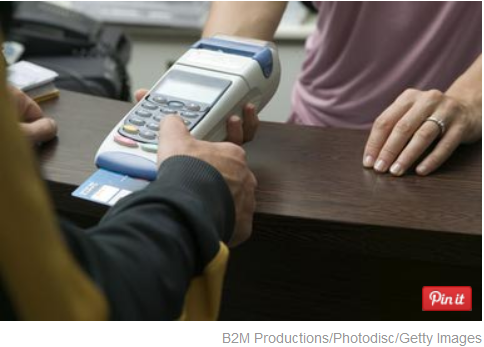There are some pitfalls that consumers should know in order to prevent their money from being tied up unnecessarily.
The “Oops” Scenario
The way debit card purchases work is that the retailer rings up your sale, swipes your card, receives an approval code, and the bank then puts the amount of the purchase into a “holding zone” until the sale is processed through your account. You in return deduct the amount from your checking account balance. Everyone is happy, the retailer has a promise of payment, you did not have to show a ton of identification, and your bank will probably make a small amount from your transaction.
As you gather your packages to leave the store, you suddenly hear an, “Oops!” from the salesperson.
She informs you that she over-charged you for an item and needs to correct her mistake. You return your sales receipt to her, she punches in a few things on the register, offers you a new receipt with the correct charges, and everyone smiles and you leave to go to the next store.
Time to Back Up!
When you hear the word “Oops!” caution lights should go off in your head! Anytime a debit card purchase is entered, your money is going to be “held” until the sale is processed. What is happening in many incidences is that sales people are not recognizing the difference of credit card purchases versus debit card purchases. What you, the consumer, needs to know is that the two are very different and errors cannot be processed in the same way.
When making error corrections many retailers will do a “void transaction” which cancels the sale and prevents it from being processed.
This system works fine with credit cards but with debit card transactions, once an approval code is obtained your money is going to be held. A “voided transaction” will not be removed until released by the retailer, which can sometimes take up to 30 days. That means those funds, may possibly, be out of your reach.
The Solution
Mistakes are going to happen so be prepared and know how to best protect your money for any corrections that may need to be processed. What is the correct process? Immediately, before any other transaction is keyed, ask for a “return” procedure to be completed and not a “voided” procedure. A return will be deducted from your account just as a sale is automatically charged to your account. No waiting period or “holding” of your funds should occur.
Make certain that you receive a copy of the “return credit” from the sales person and add the money back into your account. Correct terminology is crucial. Inspect your receipt and make certain you see the word “credit” and not “void.”
The Dreaded ‘Register Just Crashed’ Scenario
Another pitfall of using a debit card is if you happen to be the unlucky customer whose sale was just keyed and a register failure suddenly occurs and no receipt is printed. Often times what happens next is that the salesperson, trying to offer competent fast service, will re-ring the transaction when the registers are back up and functioning properly, in order to provide you with a receipt. But what happened to that first transaction? Often times your account will get charged twice if no one takes the time to verify if the sale actually got processed or not.
Immediately politely tell (do not ask) the sales person not to re-ring your transaction. Ask for a Manager and get definite proof that the original purchase was not processed. You can also call your bank, at that time, and verify that no record of the transaction exists.
Remember, anytime your debit card is swiped, your account balance is at risk of changing. You should have complete control of what those changes will be. Take the time to read the fine print of your debit card agreement and ask your bank any questions that you may have regarding how the money is held and released.
Read the full post in about money








